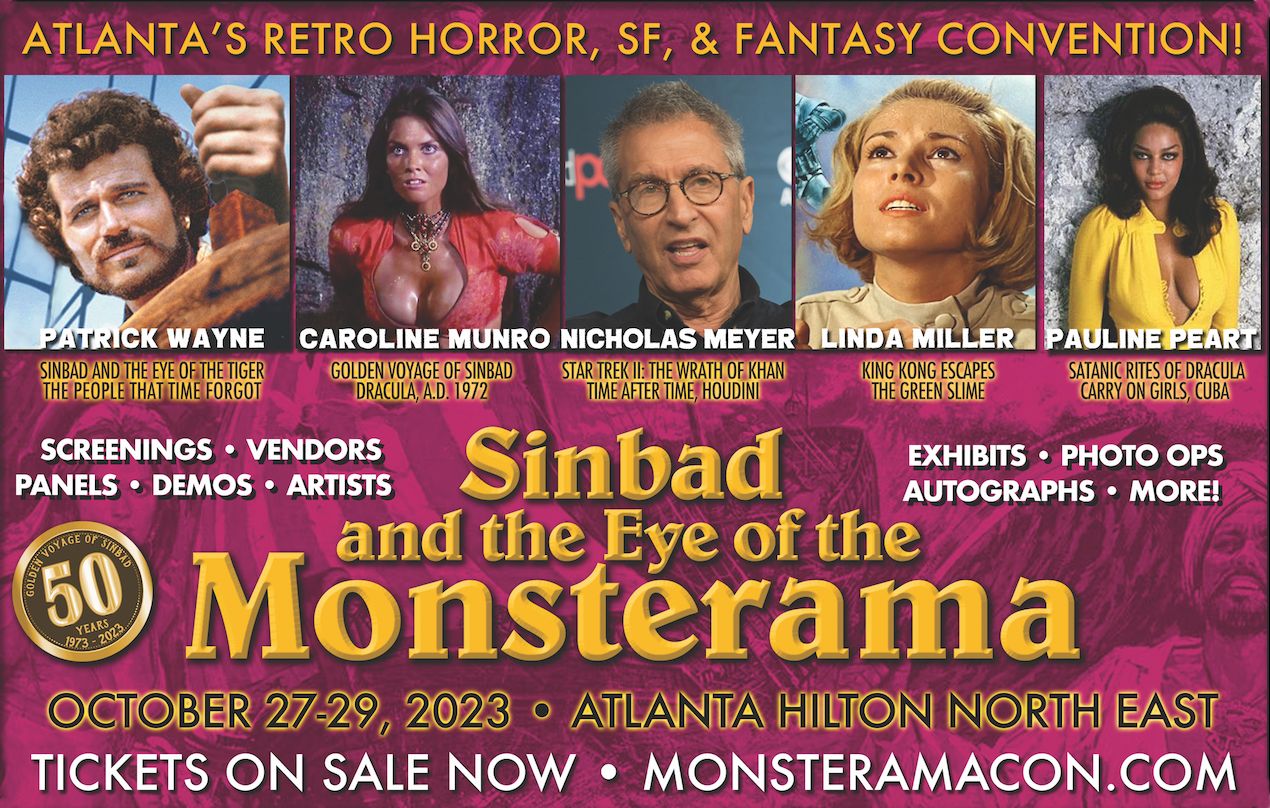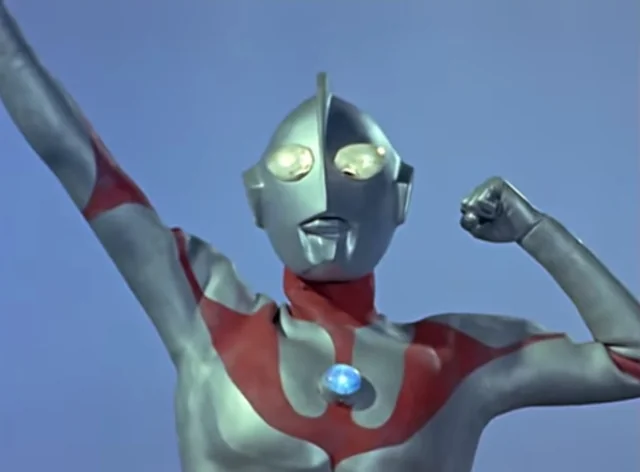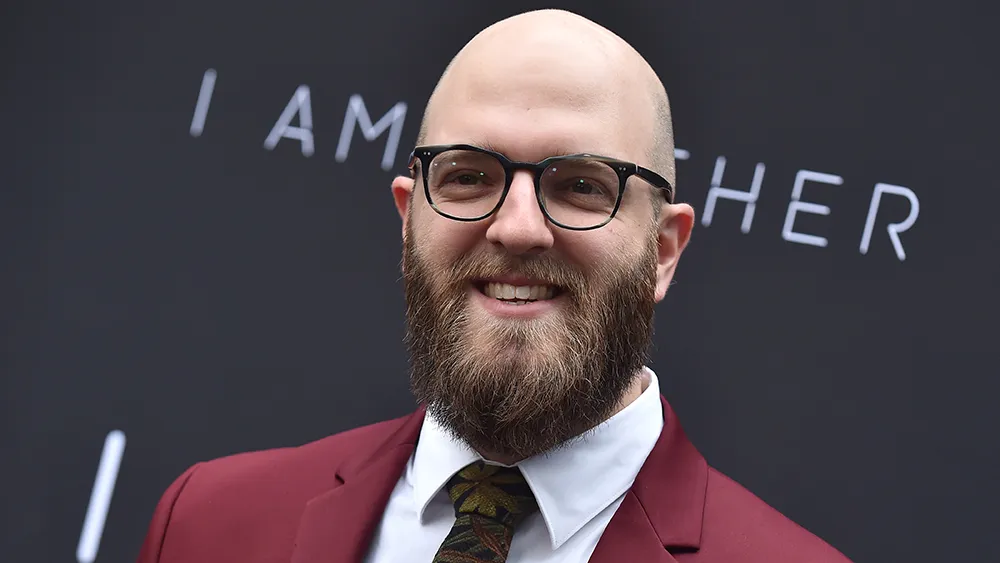Originally published in Kaiju Ramen #4.
Toho’s Godzilla franchise is well known for starting a new genre of live action special effects filmmaking with the use of suitmation and miniatures What many people may not know is that in-between the tent-pole pictures, there have been a number of animated ventures with the king of the monsters. Many fans may know that recently Netflix has been home to Godzilla anime with three animated films from Polygon Pictures and a thirteen-episode series from studios Bones and Orange. However, the history of Godzilla in animated form starts many years before these four projects.
The Early Years
The earliest animated version of Godzilla I could find is the short BAMBI MEETS GODZILLA (1969), created by Marv Newland. The two-minute short has been claimed to be one of the greatest cartoons ever created. The short, while made in 1968, saw its first theatrical release with the short animated film THANK YOU MASK MAN (1971) followed by GODZILLA 1985 and its VHS releases by New World Pictures and later, Anchor Bay. The film is preserved at the Academy Film Archive and many fans have taken the liberty to remake, remaster, and continue the legacy of this cartoon in many ways.
About a decade later, Hanna-Barbera Productions (the company behind famous cartoons like Scooby-Doo) with the help of Henry G. Saperstine, acquired the rights from Toho to use the Godzilla character in a show titled GODZILLA (1978-1979). At the time, Toho was very strict about their IP rights so they only licensed the name and basic outline to Hanna-Barbera. That did not include the atomic breath, dorsal plates, or iconic roar. To use these, Hanna-Barbera would be forced to pay more, instead they opted for a more original take on the Big G. They went with a green, fire breathing, eye lasering version that was voiced by the actor who played Lurch in the original Adams Family television series. This adaptation would also give us the infamous Godzooky, Godzilla’s clumsy nephew. This series has become a staple in the west for older Godzilla fans.
Lost Cells
Around the same time that BAMBI MEETS GODZILLA (1969) was made, Toho started working with Filmation, a company out of Los Angeles, to make a series based around Godzilla and his characters. When pitching the show publicly, they referenced Toei Animations’ THE KING KONG SHOW (1966-1969) as Toho would co-produce with Filmation. Toho would write the series and Filmation would animate it. There were also going to be two films after the series, one a compilation film, the other being a continuation.
Approximately ten years later, Henry G. Saperstine attempted to bring Godzilla back to animation with a movie. This idea never materialised. Ishiro Honda also had an idea to remake Mothra as an animated feature. This idea never made it past the concept state however. Another cut animated Godzilla would come a year later in the form of an alternative ending of GODZILLA VS. BIOLLANTE (1989). This alternative ending would include suitmation, stop motion, puppets, and an animated sequence that included Biollante eating Godzilla whole and turning into a rose.
The Nineties
It’s no surprise that by the 1990s Toho was working with Bandai Corporation to promote their film GODZILLA VS. MOTHRA (1992). In 1992, Toho made a series that was part live-action, part animated called ADVENTURE! GODZILLAND. It was a trivial series that aired from October to December of that year. The following Heisei film GODZILLA VS. MECHAGODZILLA (1993) also received a season called ADVENTURE! GODZILLAND 2 that aired from October to December. These two shows featured animated sequences with chibi versions of Toho’s famous kaijūs, even a late background appearance of MechaniKong as a cameo. These animated parts would inspire Toho to work on four educational original video anime titles GET GOING! GODZILLAND (1994-1996). These OVAs most famously gave us the first appearance, and to-date only appearance of “Gojirin” (translated to English as “Godzilly”), Godzilla’s friend. She is likely based on a pink Godzilla toy from Bandai’s 1994 line of Godzilla action figures. The four OVAs taught Japanese children about the hiragana alphabet, counting, addition, and subtraction. Strangely enough they ended at four and didn’t continue past them. In 1996, Toho started a new animated series for the Godzilla franchise “GODZILLA KINGDOM“. This time, the series was based around giving statistics for each kaiju. The series ran from 1996 to 1997 and accumulated a total of 224 episodes. Unfortunately the series is mostly lost and there’s barely any information out there on the show.
In the mid-90s, Sony Pictures made a deal with Toho to do their own American adaptation of Godzilla. This most famously started with GODZILLA (also-known-as “Godzilla vs. The Griffin”), around the time that development started, Sony worked out a deal with Fox Kids to do an animated continuation of the film. This would become what we know as GODZILLA: THE SERIES (1998-2000). The show was a sequel to the 1998 film GODZILLA. It was more akin to the 1978-1979 Hanna-Barbera series than its Hollywood film predecessor. The show ran for thirty-eight episodes with two unaired. Even with higher reviews than the film, the show was cancelled by Fox Kids to make-way for new and exciting programming. Before the show was cancelled, there were plans to continue the show further with a second season featuring Toho kaijū (in name only presumably) like Gigan.
The Modern Era
After the success of GODZILLA (2014) and SHIN GODZILLA (2016), Toho wanted to keep Godzilla in the public eye while Legendary Pictures worked on GODZILLA: KING OF THE MONSTERS (2019) so they greenlit a trilogy of Godzilla animated feature length films. Initially, it was to be a full series, but due to rushed production and budget reductions, it turned into three separate films. As the production of these films started, Toho worked out a deal with the mega-streaming service Netflix to distribute all three worldwide while also having a limited theatrical release in Japan. Unfortunately, the trilogy didn’t do so well in theaters or critically. In the fandom; the three films are infamous for lacking kaijū action and shallow characters. The creators wanted to make something that could be for people outside of the Godzilla fanbase, but that’s not what all the fans wanted. The first film was titled GODZILLA: PLANET OF THE MONSTERS which set up the world in which we would follow for the next year. The first film came out in 2017 followed by GODZILLA 2: CITY ON THE EDGE OF BATTLE in early 2018 which promoted the inclusion of Mechagodzilla, only for it to appear for a few seconds in the film.
Both of these films had tie-in novels (not released in English) that included many more kaijū and references than either film. These books have become a highlight of the trilogy for many due to their plot lines. The third and final film came out in late 2018 titled GODZILLA 3: PLANET EATER which included Godzilla’s largest foe, King Ghidorah this time as an interdimensional eater of planets. The three films follow a character named Haruo as he and a crew of people return to Earth after twenty-thousand years. Humanity left due to the rising number of kaijū attacks from the likes of Godzilla and Orga. They then spend the next two films trying to defeat Godzilla with no success only to discover the aliens they built relationships with had plans of their own. The Bilusaludo have secret plans to use living metal to take over the planet and kill Godzilla, while the Exif worship a destroyer of planets to come and destroy Godzilla and the Earth (King Ghidorah). The three films follow a similar storyline with different locations and ways to destroy Godzilla. While I personally am not a fan of these three films, they attempted to create something new and exciting for the franchise which has been very consistent with Toho’s plans since SHIN GODZILLA.
In the film for the widely popular My Hero Academia franchise titled MY HERO ACADEMIA: TWO HEROES (2019) which Toho produces, a new character named “Godzillo” appeared on screen briefly that reused Heisei Godzilla roars and closely resembles the GODZILLA VS. KING GHIDORAH (1991) design. Godzillo’s quirk is called “Toho” in reference to the company that owns the Godzilla character which gives him the power to be very kaijū-like.
Before Toho’s next big anime adaptation of Godzilla, they ran a contest in 2019 with fans of the franchise entering their own fan films, one of which would become the online series GODZIBAN (2020-current) and another being G VS. G (2019) a short film animated by Gemstone. Both won parts of the contest which Toho has since acknowledged and are now considered official works. The design of Godzilla for G VS. G would later be reused as “Snow Godzilla” in the 2019 anime movie SHINKANSEN HENKEI ROBO SHINKALION THE MOVIE: THE MARVELOUS FAST ALFA-X THAT COMES FROM THE FUTURE where he cameos for a few minutes as a villain. This same movie also saw a crossover with Hideki Anno’s Evangelion characters.
In summer of 2020, Toho’s Japanese Godzilla YouTube channel started releasing short videos of a new animated Chibi Godzilla called I’M HOME! CHIBI GODZILLA (2020-Current). It follows Chibi Godzilla and his friends as they enjoy the world around them. Chibi Godzilla has become the face of the child-side of the franchise in Japan. Since its release, there have been uploads to the English “GODZILLA OFFICIAL by TOHO” YouTube channel including English subtitles. The first season ran from July 15th, to September 30th. Following Japan’s Godzilla Fes (an online Godzilla event in Japan). A second season was announced and started its run on December 2nd, 2020.
While the three films were coming out, Toho was secretly working on what would become GODZILLA: SINGULAR POINT (2021). The series would end up being thirteen episodes that featured old and new kaijū like Anguirus and Salunga. Broadcast on television in Japan, the show got international distribution from Netflix with localized dubs (like its three movie predecessor). The show was well received but featured some fan backlash for its overuse of science and lack of Godzilla. The series also reuses the idea from SHIN GODZILLA that the titular monster has multiple forms called “Godzilla Aquatilis,” “Godzilla Amphibia,” “Godzilla Terrestris,” and “Godzilla Ultima.”
These evolutions shared physical character traits with past Toho kaijū Varan, Titanosaurs, and Gorosaurus. The show follows Goro Otaki, Haberu Kato, and Yun Arikawa with the help of Goro’s own creation of Jet Jaguar from the Otaki Factory, and scientist Mei Kamino. As mysterious flying creatures start appearing they set off to try and discover why and how these strange occurrences are happening. During their search, other creatures appear, bigger and more destructive than the last. What is the Singular Point? What is this mysterious red dust? All of this and more are answered in GODZILLA: SINGULAR POINT! Since the show’s release, and a mysterious end credits scene, many people have theorized that a possible season two could be in development, while we have yet to get confirmation, the odds are high due to the successful first season.
The Future
As stated, GODZILLA: SINGULAR POINT features an end credit scene causing fans to believe that Toho is working on a second season, but that may not be all. The amazing working relationship between Netflix and Toho shows that we could possibly see Godzilla anime for the foreseeable future. All four recent major projects have been met financially well with lower budgets causing greater profits after the licensing fees from Netflix are paid. Outside of Toho, Legendary Pictures and Netflix are working on an anime prequel to GODZILLA VS. KONG (2021) titled SKULL ISLAND. While the potential of Godzilla appearing is slim-to-none, there is a high likelihood of him being referenced somewhere in it. Besides that, Toho’s CG anime shorts called I’M HOME! CHIBI GODZILLA (2020-Current) will probably continue to teach children the beauty of friendship and other important things like manners. And Gemstone’s sequel to the originally made fan short, G VS. G 2 is coming out later in 2021! There are also many other cameos and appearances, both licensed and unlicensed, of Godzilla in animated format from the Godzilla Hotel appearing in anime, to THE SIMPSONS (1989-current) parodying the franchise, and even cameos of Baragon and King Ghidorah in early seasons of the DRAGON BALL franchise. One thing to say for certain is that the future of animated Godzilla is looking bright and rich in content.





